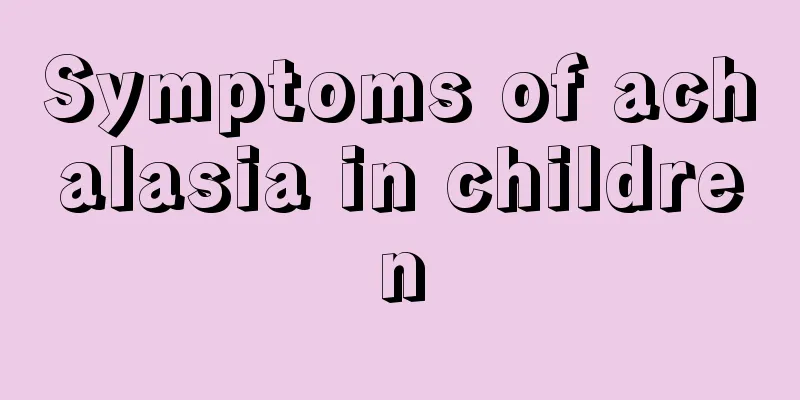Symptoms of achalasia in children

|
The main symptoms are difficulty swallowing, regurgitation and vomiting, and chest discomfort or pain. Most patients have had symptoms for a long time before they come to see a doctor, ranging from a few days to many years. Symptoms may not be obvious at first and progress slowly, or they may occur suddenly. Occasionally, there are no symptoms and the disease is only discovered accidentally during routine chest X-ray and respiratory examination. In the early stage, patients must pay attention to treatment. Let’s take a look at the relevant introduction of the article below: Symptoms of achalasia in children 1. The most common symptom of dysphagia is difficulty swallowing solid and liquid foods. At first, symptoms occur intermittently and vary from day to day. They can be aggravated by emotional stress, eating quickly, or eating hot or cold food. Thereafter, dysphagia may occur with every meal or even every time you swallow. Patients can perform different actions on their own to relieve dysphagia, such as drinking large amounts of liquids, swallowing air forcefully, or eating while standing. Symptoms come and go. Due to difficulty in eating, he suffers from psychological problems and only wants to eat alone. 2. Reflux vomiting occurs later than dysphagia, and often occurs during or after meals or when lying down. In the early stage of the disease, a small amount of food just eaten may be regurgitated and vomited during or after each meal. This can relieve the feeling of esophageal obstruction. As the disease progresses, the esophageal capacity also increases, and the frequency of regurgitation and vomiting quickly decreases. Regurgitation of large amounts of undigested food that has a foul odor from days ago. When the esophagus is significantly enlarged, it can accommodate large amounts of food and liquid, and reflux and vomiting will occur when the patient lies in the supine position. Especially during nocturnal vomiting, paroxysmal coughing and bronchial aspiration may occur, leading to respiratory complications such as pneumonia, lung abscess, and bronchiectasis. 3. Chest discomfort or pain is severe spontaneous pain under the sternum, which may radiate to the mandible, shoulders and arms, and last for several minutes to several hours. It often occurs in the early stages of the disease, especially in children with severe achalasia, and is not necessarily related to eating. Manometry revealed high-amplitude contractions, possibly related to esophageal muscle spasm. Some pain may occur when you eat too quickly or when food gets stuck in the lower esophageal sphincter. The pain symptoms are not very obvious for patients with long-term esophageal dilation that has become S-shaped. 4. Weight loss and anemia both affect eating due to dysphagia and are related to the quality and quantity of food intake. They can occur at any stage of the disease, but death from hunger rarely occurs. Malnutrition can also lead to vitamin deficiency and anemia. The above is an introduction to pediatric achalasia. I believe many people have a certain understanding of it. There are still many symptoms of this disease. Although it is the same disease, the condition of each patient is different, so patients must receive treatment according to their own condition. |
<<: What to do if your child has tetany?
>>: Treatment for childhood convulsions
Recommend
Here are some tips to prevent children from getting scalded
Children are always associated with naughtiness a...
What to do if your baby's toenails are uneven
The baby's body's defense system is not y...
Intellectual development of a four-year-old baby
The development of a child's intelligence is ...
What to do if a child has a fever, shivering or chills
If children catch a cold, they will often have a ...
Treatment of appendicitis in children
In recent years, the effect of treating appendici...
Is it harmful for children to have a nose mirror?
I believe that anyone who has undergone a gastros...
What is the normal height for a nine-year-old?
The child's body is something that parents pa...
There is a lump behind the child's ear
There are the most lymph nodes behind the ears. W...
What to do if your child has neck pain
There may be many reasons why children have neck ...
Why is the child's stool loose?
Gastrointestinal diseases in children are relativ...
What to do if your child has a dry nose? These methods can solve it
The air is very dry in autumn and winter, and man...
Treatment of cough with massage in children
Many children have experienced coughing symptoms....
Can a two month old baby wash his hair every day?
Most babies are unwilling to take a bath or have ...
What are the methods for treating cough in children?
Normally, many children often have coughs of vary...
What are the symptoms of gastroesophageal reflux in children?
Gastroesophageal reflux disease in children is re...









